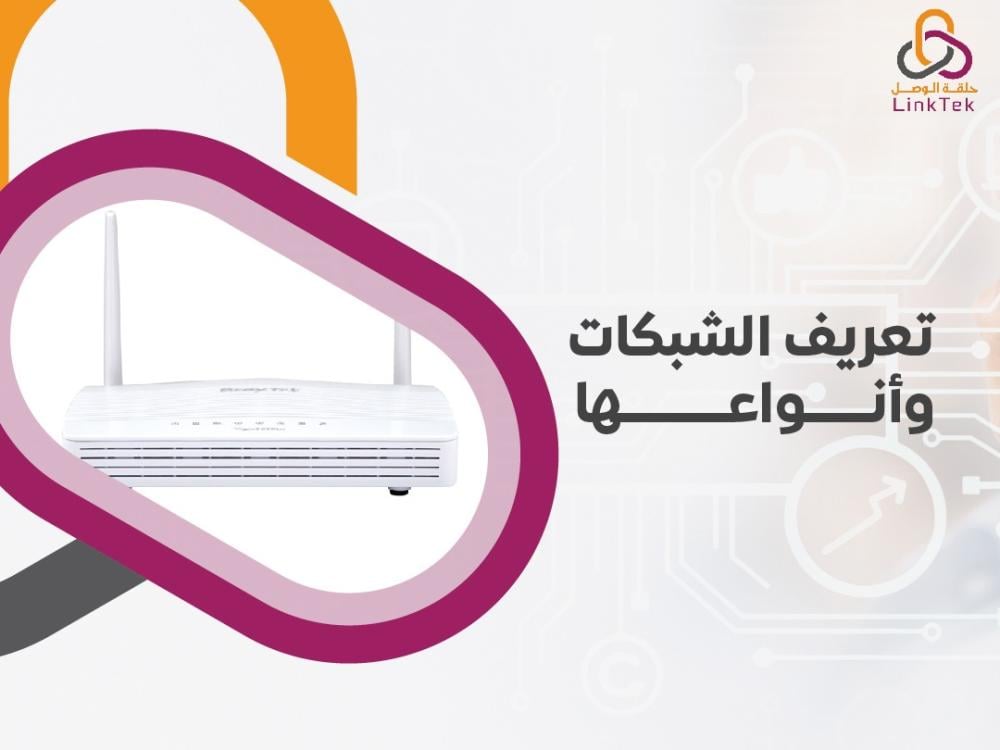
Today, the world is more interconnected and interactive than ever before, thanks to the significant impact of various types of networks. These networks have simplified communication among individuals, communities, and various institutional and social entities. Scientific conferences and global seminars can now be held solely through network communication. So, what are networks and their types? How do networks facilitate communication and information exchange? This is what we will discuss in this article.
Definition of Networks and Their Various Types
Starting with the definition of networks and their types, networks are the connections between any two devices, whether these devices are mobile phones, computers, or others, and whether the connection is wired or wireless. The purpose of this connection is to exchange information and data of various kinds. Some types of networks also allow connected devices to share resources, data, and information. Wired networks, for example, can share devices like printers and scanners among the connected devices.
As for the types of networks, they can be categorized as follows:
- Local Area Network (LAN): This connects devices within a small geographic area, such as a home, office, or company.
- Wide Area Network (WAN): This connects local networks across a wide geographic area, such as cities and countries. These networks are often managed by governments or governmental organizations.
- Metropolitan Area Network (MAN): This typically covers a city and is also managed by governmental institutions.
- Personal Area Network (PAN): This connects devices within a very small range, such as connecting mobile devices within a home via Bluetooth.
- Storage Area Network (SAN): This connects storage devices to multiple servers to provide efficient access to data.
- Virtual Private Network (VPN): This provides a secure and private connection for network users, even when connecting through an unsecured network like the internet.
- Wireless Networks: These provide wireless connectivity.
How Do Networks Facilitate Communication and Information Exchange?
As mentioned earlier, networks of various types facilitate communication among individuals, communities, and between individuals and communities. Networks assist in facilitating communication and information exchange in the following ways:
- Networks help in easing communication among individuals, making it easier for people within the same company, community, or even across different countries to communicate.
- Networks aid in storing, saving, and protecting information from theft or damage.
- Networks enable high-speed information exchange while maintaining the confidentiality of the transmitted information.
- Networks provide various services that help individuals in all aspects of their lives.
- Networks allow easy and quick access to all kinds of information.
How to Protect Your Networks
Individuals and companies certainly need to protect their data and information and ensure secure communications among individuals, companies, and different organizations. The question is, how do we protect our networks? Here are some steps to help protect your networks from breaches:
- Implement firewalls and regularly check for intrusions.
- Create strong passwords for networks and encrypt communications using specialized software.
- Use security and antivirus software to protect against viruses and malware.
- Utilize various programs for user identity verification, such as two-step verification programs.
- Use different access permissions to prevent unwanted people from accessing various data.
- Continuously detect security flaws, identify vulnerabilities in security systems, and address them promptly.
- Train employees to identify and deal with different security issues.
- Use various encryption techniques and encrypt sensitive data that might be stolen.
By following these steps, you can better understand networks, their types, and how they help facilitate communication and information exchange.

